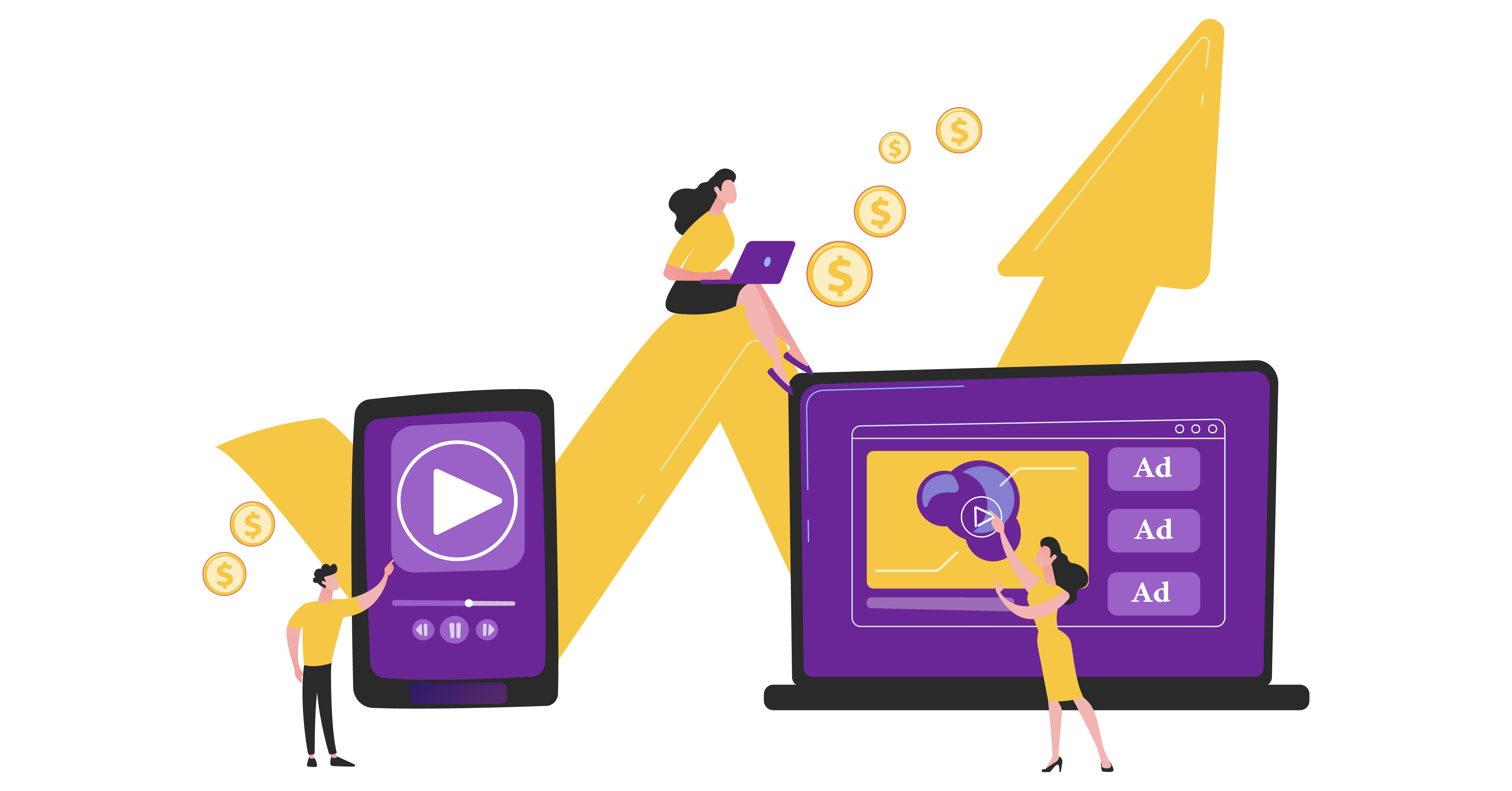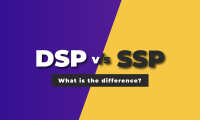Top 10 Video Ad Networks for Publishers
Video marketing is regarded as a juggernaut form of advertising in the ad tech industry. It has proven to be a promising ad format as it hits all the boxes- It amplifies ROI, aligns with the growing short-form video trend, tells a story, and connects with the viewers. Advertisers are willing to assign a huge chunk of their ad spending to video format. Publishers should tap into this trending ad format in order to unlock the true potential of their yields.
Data by Statista says that the ad spending in the Video Advertising segment is projected to reach US$180.40bn by the end of 2022. It’s anticipated to show an annual growth rate (CAGR 2022-2027) of 12.06%, resulting in a projected market volume of US$318.80bn by 2027.
Statista data also shows that Ad spending in the Video Advertising segment is projected to reach US$0.98bn in 2022. At a CAGR of 5.81%, it is expected to reach a market volume of US$1.30bn by 2027.
A study by Delloite released earlier this year says that mobile consumption in India is expected to grow up to 16 billion. With such a high number of users, the Indian market will be booming with video consumption.
Larger publishers like The Washington Post have gone beyond Facebook in-stream ads and explored better ad platforms to help them establish a wider impact through video advertising. These ad platforms are video ad networks that connect publishers to video advertisers and help them utilize their ad inventories in a way that maximizes their revenue.
What are video ad networks?
Video networks are a type of ad network that favors video ad formats. They are specialized in generating incremental revenue and increasing ad impressions through video ads. Both publishers and advertisers can join a video ad network to achieve their respective goals through video ads.
Video ad networks help marketers monetize their video content through programmatic demand. There are some ad networks that also create video content for publishers. By using video ad networks, publishers can maximize their ad revenue with minimum effort.
What are the types of video ad formats?
- Skippable in-stream ads
Skippable in-stream ads play before, during, or after other videos. After 5 seconds, the viewer has the option to skip the ad. These are the ones commonly seen on YouTube.
- Non-skippable in-stream ads
Another ubiquitous video ad format is non-skippable in-stream ads that are 15 seconds (or shorter) and plays before, during, or after other videos. Viewers don’t have the option to skip the ad.
- Video discovery ads
These are the ads that are placed in the video content as part of YouTube search results, next to other YouTube videos, or on the Youtube mobile homepage. When clicked the video will then play on the YouTube watch page or channel homepage. With video discovery ads the publishers make revenue when someone clicks the thumbnail to watch the ad.
- In-feed video ads
In-feed video ads consist of a thumbnail image from the video with some text. While the exact size and appearance of the ad may vary depending on where it appears, in-feed video ads always invite people to click to watch the video. The video then plays on the YouTube watch page or channel homepage.
- Bumper ads
Bumper ads are short ads displayed before, during, and after other videos on YouTube and websites. Brand awareness campaigns with short messages can leverage this video ad format. These ads are 6 seconds long or even less and are unskippable.
- Outstream ads
Outstream ads are designed for mobiles and tablets. This video ad format begins on mute and the viewer has to unmute it by tapping on the video.
- Masthead Ads
Masthead ads are displayed across desktops, mobile devices, and TV. These ads autoplay without sound for 30 seconds, with the option for viewers to unmute. After they have played it, the ads default to thumbnail and text format.
How to choose the right video ad network?
Publishers have to define their revenue before looking into the services offered by the video ad networks in the markets. Once that is outlined, here are some of the factors to keep in mind when choosing a video ad network partner.
- Requirement of minimum visits
- Revenue model
- Supported ad formats
- Bidding strategy
- Ad fraud prevention schemes
Here are the top 10 video ad networks for publishers
- Google AdSense
Google AdSense is an ideal video ad network partner for small-scale publishers. The minimum traffic requirement is only 100 visitors per day. It has a high volume of video content, i.e., greater than 40% of video content with over 2 million video impressions monthly.
Google AdSense has varied AdSense program policies based on specific video ad formats. YouTube content publishers are not directly eligible for AdSense. However, they can use this video ad network through their YouTube partner program.
Users can utilize a video player integrated with the Google IMA SDK and/or compliant with VAST 3.0 and VPAID 2 JS. They can also utilize an HTML5, Android, or iOS-based video player. It supports video ad formats like linear, overlay (non-linear), and full-slot. With a video player source code, publishers can directly integrate Google AdSense into their platforms. They can also opt for Third-party video player integration and VAST/VPAID integration.
- Smart Ad Server
Publishers should prioritize that their video ads reach people across multiple devices and screens. Smart Ad Server is a video ad network that can help them achieve that. Their in-stream and out-stream solutions are built for all publishers and designed to support video advertising across all screens.
It gives publishers the option to select a custom instream integration method or instantly activate ready-to-run out-stream formats. It supports dynamic video formats across the web, mobile web, mobile apps, and connected TVs. Their integrated UI for video and display advertising ensures a streamlined workflow that helps publishers manage every demand channel.
- Primis
By partnering with Primi, publishers can add more value to their visitor’s time on their site and increase their ad revenue. This video discovery platform ensures that users get the most high-quality video content ads. Primis is widely known for its engagement-based video experiences.
Their contextual targeting and wide video library ensure the most relevant video ad delivery for the audience. This video ad platform offers customization tools that let publishers have complete control over categories, channels, and keywords that prompt the display of relevant video ads. It supports ad formats like native, mid-article, and classic. It offers over 30 industry vertices and 6.8 monthly video recommendations on its platform.
- Teads TV
Teads TV is a video ad network that has been a top choice of many premium large-scale publishers like CNN, Bloomberg, and The Economist. It’s an ad network that is known for its remarkably relevant video ad delivery that ensures user engagement. With Teads TV publishers can relish programmatic features like yield management, unified auctions, quality safeguards, and centralized reporting.
Its mobile-first approach ensures that the video ad campaigns reach all screens and generate optimum revenue by utilizing the publisher’s ad inventories to their fullest. Their contextual targeting and optimization tools help them serve high-quality videos to their global audience. Teads Tv uses inRead ad formats like live video ads, flow video ads, scroll video ads, and carousel video ads.
- Pubmatic
Private marketplaces have proven to be revolutionary for most publishers. If publishers wish to try their hand at it, they can join Pubmatic. It is a video ad network that connects them to the high-end demand side. It ensures the highest level of security as well as premium prices for their ad inventories. Their unified bidding solutions, custom management tools, and performance optimization insights help publishers gain revenue through multiple channels and dynamic video ad formats. Their unified bidding makes it possible for the auctions to take place across multiple screens at the same time, ensuring maximum yield.
- Magnite
Magnite is a video ad network that is a merger between Rubicon and Telaria. This ad network caters to the global demand for video ads which puts the publisher’s site in a wider market. Their video header bidding helps them connect with the premium and competitive ad demands across users of varied devices. They can be assured of serving high-impact video ads on their site that give them high revenue for each impression. Some of the promising features of Mangite include-
- Real-time insights through their live-performing dashboard
- Automated ad pods that increase revenue and fill rates
- Insightful TV content reporting to understand buyer patterns
- Data privacy and protection
- SelectMedia
SelectMedia helps publishers to monetize their video and mobile inventory through its full-stack & out-stream video SSP technology and access to its unique premium marketplace. Some of their prominent out-stream and in-stream video products/formats include bottom sticky, in-article, in-article floating, overplay, fixed play, slider play, and brand header. They also offer customized ad formats depending on the publisher’s needs. SelectMedia’s centralized real-time dashboard lets publishers manage all their campaign activities in one place. Some of their programmatic solutions include a state-of-the-art video player, automatic Yield Optimization, CDN to host the video ad files (if needed), and Ad Server to manage the ads.
- Propeller Ads
Propeller Ads is an ideal video ad network for publishers with high CPM (Cost per impression) and traffic. It is a prominent ad network in the ad tech industry as it offers relatively higher payments. It supports multiple formats like push and in-push video ads, interstitial video ads, and popunder video ads.
It offers a billion monthly audiences for industry-focused campaigns which makes it ideal for lead generation, eCommerce, and finance ad campaigns. Some of its significant features include stable demand volume, high-quality conversions, maximized profits from CPA (Cost per acquisition), and improved ROI with advanced optimization tools.
- Fyber
Fyber caters to all the needs and requirements of a publisher who wants to make the most out of video ads through mobile apps. This video ad network focuses on mobile-first ad formats and units like square, banner, interstitial, landscape, and vertical.
This is a data-driven platform that also offers a centralized bidding and management service. Plus, with such rich data, Fyber also gives an opportunity to publishers to run A/B tests on the ads. This makes getting audience insights, optimizing ad revenue, and controlling ad inventory very seamless.
- SmartyAds
SmartyAds SSP helps publishers optimize varied ad inventories to drive them the highest revenue. This video ad network ensures high fill rates, CPM maximization, as well as, user engagement. Features like header-bidding video demand, yield protection to match the floor price with the bids, premium demand partners, and integration with top-rated video traffic partners (Mobfox, AdColony, InMobi, PubNative).
SmartyAds SSP supports ad formats like dynamic in-stream and in-banner videos, rewarding ads, playable ads, and native ads. It offers 30+ targeting options to always keep the video advertising messages relevant to the publisher’s audience. It generates reports in real-time to analyze impressions and conversions. Publishers can also track user interaction.
In conclusion…
Video advertising is the future of programmatic advertising. By inducing video ad formats, publishers are capturing the highest segment of the audience globally and channeling varied revenue streams. If done right, video advertising can be a game-changer for publishers.
Snackable video content, CTVs, and shoppable videos are the upcoming video trends. Publishers should optimize their platforms, as well as, revenue plans keeping this video revolution at the center of it. These above video ad platforms can help publishers streamline the process and help publishers stay relevant to the ad tech trends through their AI-drive services and technologies.




Leave a Reply